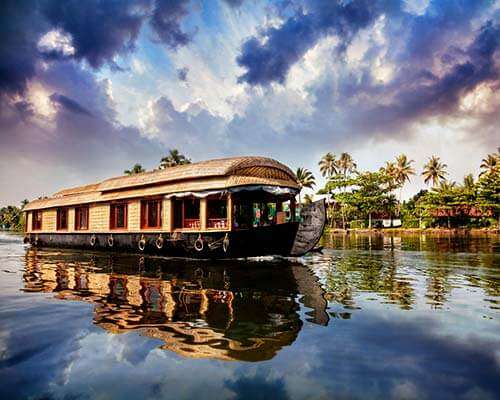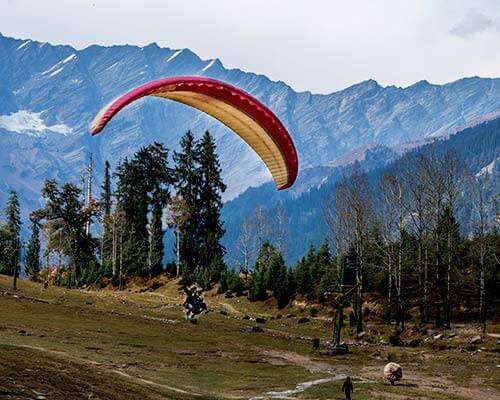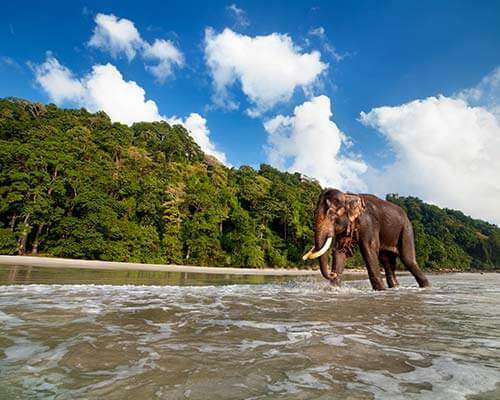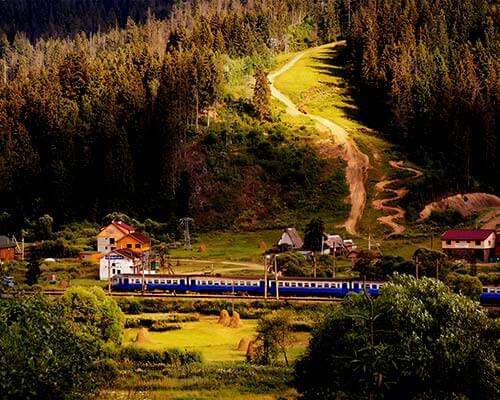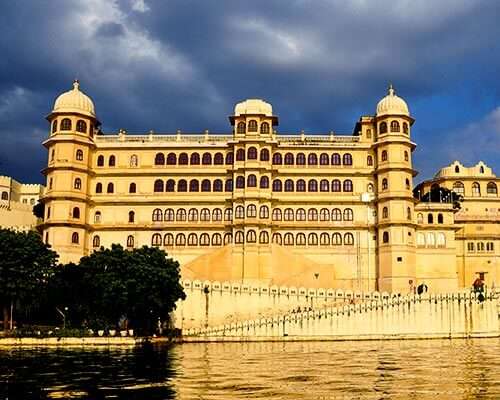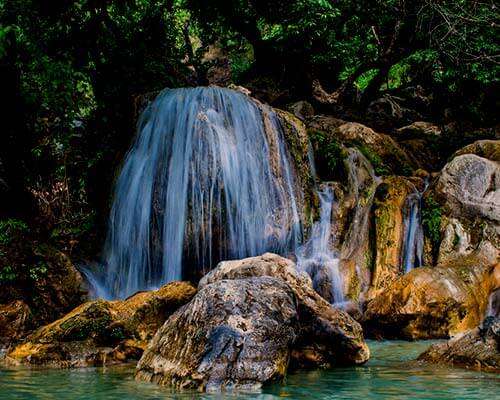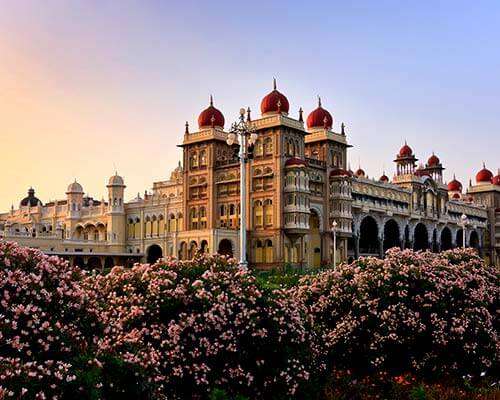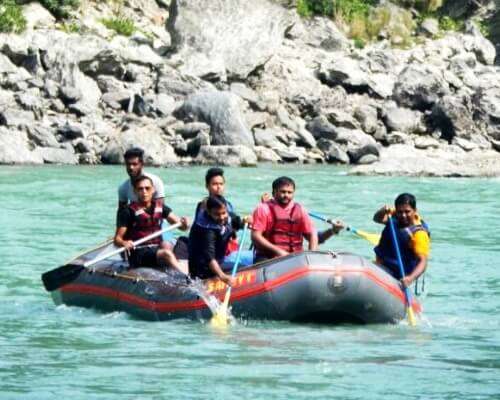25 Amazing Wildlife Sanctuaries In India For 2025 Adventurous Safaris And Encounters With The Wild!
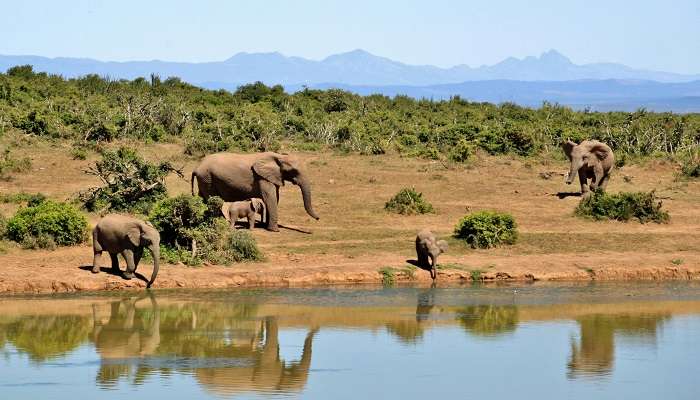
India boasts of a rich biodiversity, vast natural resources, and some very unique species of flora and fauna that roam free in the huge number of nature reserves and protected wildlife sanctuaries in this enormous country. So, we have given below a list of wildlife sanctuaries in India and animals found there to help you choose the perfect spot for your next adventure. From Tibetan antelopes in the north, giant squirrels the south, red pandas in the east, to Asiatic lions in the west, these lush abodes are home to a plethora of wild species that you may not see anywhere else.
25 Best Wildlife Sanctuaries In India
Look at the list of wildlife sanctuaries in India, which shelter rare and exotic species of plants, animals, and birds, and take your pick. Out of the 514 sanctuaries here, these are the most favorite of wildlife enthusiasts and nature fanatics who understand the true importance of wildlife sanctuaries.
- Bhadra Wildlife Sanctuary, Karnataka
- Tadoba Andhari Tiger Reserve, Maharashtra
- Chinnar Wildlife Sanctuary, Kerala
- Dandeli Wildlife Sanctuary, Karnataka
- Bhagwan Mahavir Wildlife Sanctuary, Goa
- Interview Island Wildlife Sanctuary, Andaman
- Kutch Desert Wildlife Sanctuary, Gujarat
- Karakoram Wildlife Sanctuary, Jammu And Kashmir
- Indian Wild Ass Sanctuary, Gujarat
- Dibang Wildlife Sanctuary, Arunachal Pradesh
- Rollapadu Wildlife Sanctuary, Andhra Pradesh
- Grizzled Squirrel Wildlife Sanctuary, Tamil Nadu
- Eaglenest Wildlife Sanctuary, Arunachal Pradesh
- Koyna Wildlife Sanctuary, Maharashtra
- Tamor Pingla Wildlife Sanctuary, Chhattisgarh
- Senchal Wildlife Sanctuary, West Bengal
- Periyar Wildlife Sanctuary, Kerala
- Govind Wildlife Sanctuary, Uttarakhand
- Chilka Wildlife Sanctuary, Odisha
- Nauradehi Wildlife Sanctuary, Madhya Pradesh
- Manas Wildlife Sanctuary, Assam
- Mundanthurai Wildlife Sanctuary, Tamil Nadu
- Indira Gandhi Wildlife Sanctuary, Tamil Nadu
- Landfall Island Wildlife Sanctuary, Andaman
- Eturnagaram Wildlife Sanctuary, Telangana
1. Bhadra Wildlife Sanctuary, Karnataka
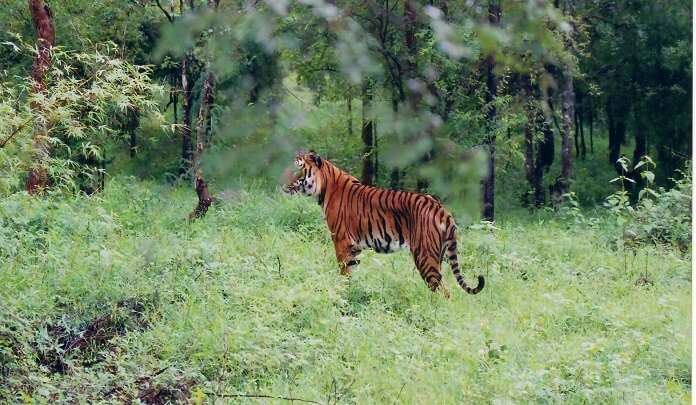
Dry and moist deciduous forests develop Bhadra Wildlife Sanctuary along with some semi-evergreen forests. It is a great place for adventure seekers and photographers. Go on a safari within the extensive habitat of common and rare plants and animals and experience the magic of nature and the wilderness. Owing to its extensive natural resources, this is one of the top 10 wildlife sanctuaries in India.
- Location: Tarikere, Lakkavalli, Chikmagalur, Karnataka, 577115, India
- Timings: 6:30 AM – 8:30 AM, 4:00 PM – 6:00 PM
- Entry Fee: INR 400
- Best Time To Visit Bhadra Wildlife Sanctuary: March to May
Also Read: Private Island Homestay In Karnataka
Looking To Book A Holiday Package?
2. Tadoba Andhari Tiger Reserve, Maharashtra
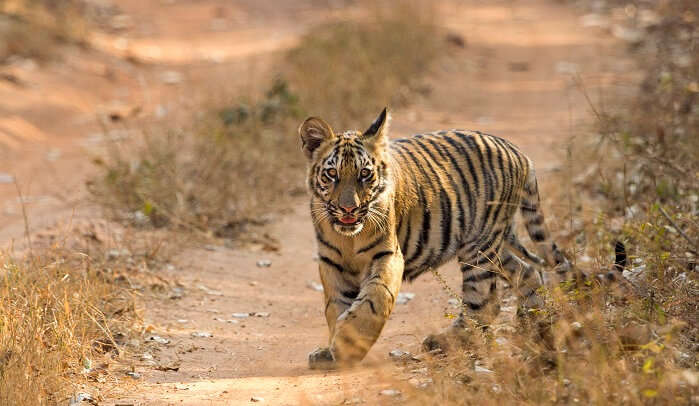
Tadoba Andhari Tiger Project is a famous tiger reserve located in the Chandrapur district of Maharashtra. It is one of the oldest and biggest wildlife sanctuaries in India. Home to various species of herbivore and carnivore animals, such as Bengal Tigers, Leopards, Striped Hyenas, Jungle Cats. Other than a plethora of animals species, this park is also home to some rare plant species like the axle-wood, which is a fire-resistant species of trees and is very common in this park among other species like Black Plums, Arjun, and Palas.
- Location: Chandrapur, Maharashtra 442401
- Timings: 6 AM – 6 PM
- Entry Fee: INR 20 per person | INR 50 per vehicle | INR 100 for guide
- Best Time To Visit Tadoba Andhari Tiger Reserve: October to March
3. Chinnar Wildlife Sanctuary, Kerala

Situated on the Western Ghats of Tamil Nadu over the Anamalai Hills, the Chinnar Wildlife Sanctury is among the largest and top 10 wildlife sanctuaries in India. Though it’s not as popular as the Periyar National Park in Kerala, this massive and beautiful wildlife sanctuary still holds a special place in the hearts of all avid wildlife explorers who come to Kerala only to get lost in its vast jungles. This verdant forest space also has a diverse ecosystem, various medicinal herbs and plants, as well as a rich ethnic cultural heritage.
- Location: Udumalpet Road, Munnar, Kerala, 685612, India
- Timings: 6 AM – 6 PM
- Entry Fee: INR 10 (Indian nationals) | INR 100 (Foreign nationals) | INR 150 (heavy vehicle) | INR (light vehicle)
- Best Time To Visit Chinnar Wildlife Sanctuary: November to February
Related Post: Kerala Cuisine
4. Dandeli Wildlife Sanctuary, Karnataka
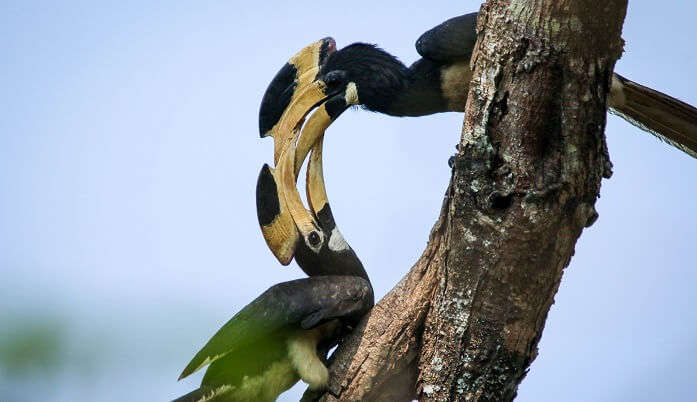
Tucked on the banks of the Kali River in Karnataka, Dandeli Wildlife Sanctury is the second biggest wildlife sanctuaries in India. It is home to a wide range of rare and exotic plant species and animal species, including predators, amphibians, reptiles, insects, and more. Additionally, has a vast variety of resident as well as migratory bird species which makes it one of the best wildlife sanctuaries of India for birdwatchers and bird photographers.
- Location: Solad Complex, J N.Road, Dandeli, Gokarna, Uttara Kannada -581326
- Timings: 12 AM – 6 PM
- Entry Fee: INR 40 (Indian nationals) | INR 80 (foreign nationals) | INR 40 (jeep safari)
- Best Time To Visit Dandeli Wildlife Sanctuary: March to October
5. Bhagwan Mahavir Wildlife Sanctuary, Goa

Bhagwan Mahavir Wildlife Sanctuary lies in the tiny town of Mollem in Goa and is situated amidst the scenic Western Ghats, enveloped by thick picture-perfect forests. It holds a prominent place among the names of wildlife sanctuaries in India since it boasts of both historical as well as geographical significance. More than animal lovers, this place is frequented by birdwatchers since it is home to a diverse array of avifauna. However, it also provides shelter to a large number of animals.
- Location: Goa 403410
- Timings: 9 AM – 5:30 PM
- Entry Fee: INR 10 per person (adult) | INR 3 per person (student)
- Best Time To Visit Bhagwan Mahavir Wildlife Sanctuary: November to March
Related Post:Things To Do In Goa
Planning your holiday but confused about where to go? These travel stories help you find your best trip ever!
6. Interview Island Wildlife Sanctuary, Andaman
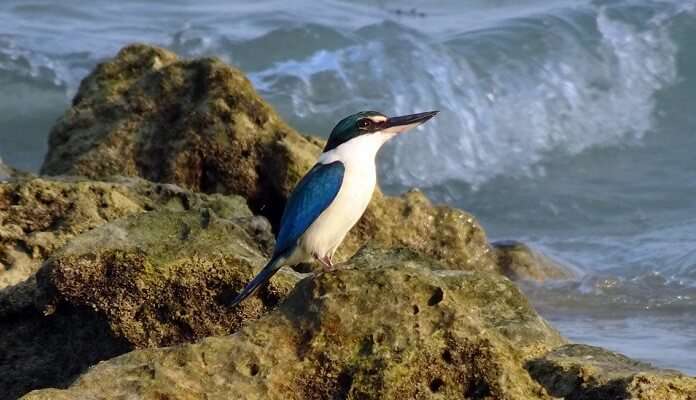
Founded in 1985, Interview Island Wildlife Sanctuary is a unique wildlife preserve in the Andaman Islands. It was established to protect elephants. Visit this sanctuary to witness the true natural splendour of these islands and some exotic flora and fauna, owing to its combination of semi-evergreen, littoral, and mangrove forest areas. It’s also a favourite hub of many birdwatchers and ornithologists who come here every year from various parts of the world to see the large population of birds in the park.
- Location: Andaman Islands, India
- Timings: NA
- Entry Fee: INR 50 per person (Indian) | INR 200 per person (Foreigner)
- Best Time To Visit Interview Island Wildlife Sanctuary: November to April
7. Kutch Desert Wildlife Sanctuary, Gujarat
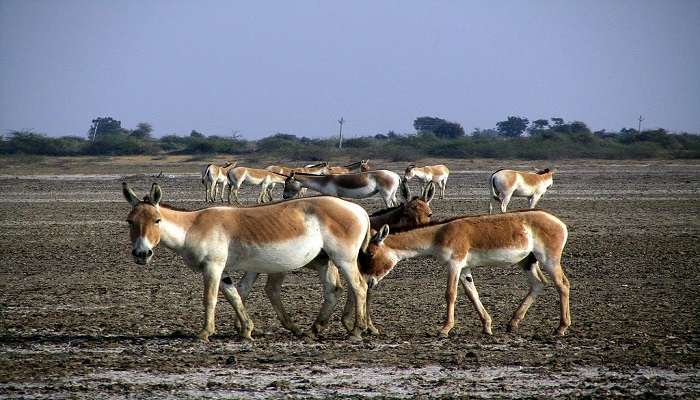
Situated less than 100 km away from the city of Bhuj, the Kutch Desert Wildlife Sanctuary is one of the most beautiful wildlife sanctuaries in India. It is also considered to be one of the largest seasonal saline wetland areas. The park’s 0.5-1.5 meter water depth helps attract and preserve the enormous population of flamingos and greater flamingos that can be spotted here.
- Location: Rann, Dholavira, Kutch, India
- Timings: 6 AM – 6 PM
- Entry Fee: INR 250 (Indian nationals) | INR 1200 (foreign nationals)
- Best Time To Visit Kutch Desert Wildlife Sanctuary: November to March
Related Post:Gujarati Dishes
8. Karakoram Wildlife Sanctuary, Jammu And Kashmir
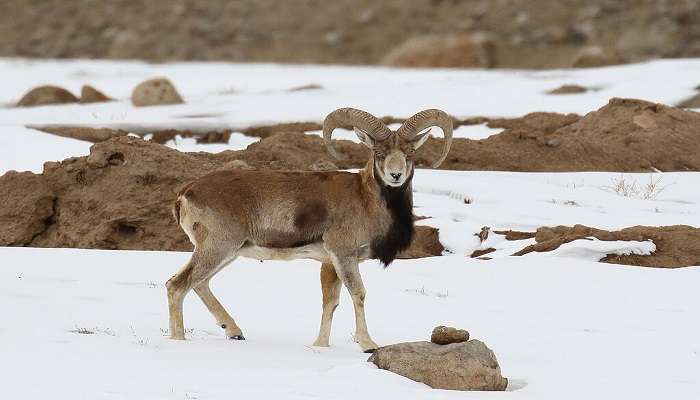
Karakoram Wildlife Sanctuary is a high altitude sanctuary, situated in the easternmost side of Leh district in Jammu and Kashmir is its most prized possession. The Karakoram Wildlife Sanctuary serves as an essential wildlife reserve in India and provides shelter to the migratory population of rare Tibetan Antelope, that is also called Chiru in the local dialect. Blessed with magnificent mountain views, this is among the most beautiful wildlife sanctuaries in India.
- Location: Leh District, Jammu and Kashmir
- Timings: 8 AM to 6 PM
- Entry Fee: INR 20 Per person (Indian)| INR 100 (Foreign nationals)
- Best Time To Visit Karakoram Wildlife Sanctuary: May and October
9. Indian Wild Ass Sanctuary, Gujarat
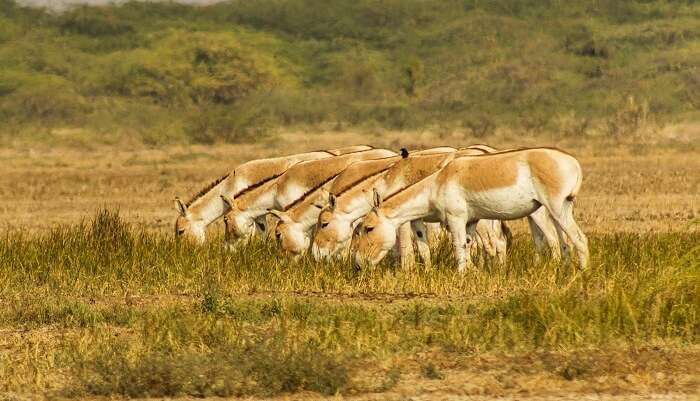
In the list of wildlife sanctuaries in india, the Indian Wild Ass Sanctury is a gem located in the Kutch area of Gujarat. This was established in the year 1973 after the government acknowledged the tremendous importance of wildlife sanctuaries in India that worked towards protecting its endangered wild ass population. Other than wild ass, the village also has a sizeable population of Bharwad and Rabari tribes. Commonly known as ghudkhar, the Indian Wild Ass can be found in large numbers here.
- Location: Mayurnagar Halwad Road, Dhrangadhra, Gujarat
- Timings: 7 AM – 6:30 PM
- Entry Fee: INR 280 (Indian nationals) | INR 1500 (foreign nationals)
- Best Time To Visit Indian Wild Ass Sanctuary: October to March
Related Post: Street Food In Ahmedabad
10. Dibang Wildlife Sanctuary, Arunachal Pradesh

Tucked away in the Anini district of Arunachal Pradesh, the Dibang Wildlife Sanctuary is endowed with a variety of animal and plant species that lure in wildlife lovers and birdwatchers from near and far. Serving as a home to enormous biodiversity including the fascinating snow leopards, this is among the best wildlife sanctuaries in India. Enriched with abundant nature’s bounty and dramatic views of snowy mountains, sparkling streams, deep gorges, and thick jungles, it is one of the best places to visit in India.
- Location: Dibang Valley, Roing, Arunachal Pradesh
- Timings: 8 AM to 7 PM
- Entry Fee: NA
- Best Time To Visit Dibang Wildlife Sanctuary: November to February
11. Rollapadu Wildlife Sanctuary, Andhra Pradesh

Spanning over an area of 614sq km in Andhra Pradesh’s Kurnool, Rollapadu Wildlife Sanctuary offers wildlife enthusiast and nature lovers a rare chance to venture into its unseen and unexplored realms. It is home to a huge diversity of flora and fauna, including the Great Indian Bustard and Lesser Florican. Though it’s not as popular as the other wildlife reserves in the country, it is still one of the best places to experience nature and wildlife if we look at state-wise best wildlife sanctuaries in India.
- Location: Rollapadu, Andhra Pradesh 518405
- Timings: 7 AM – 6 PM
- Entry Fee: INR 500 for a 1-hour tour
- Best Time To Visit Rollapadu Wildlife Sanctuary: November to February
Related Post:Araku Valley
12. Grizzled Squirrel Wildlife Sanctuary, Tamil Nadu
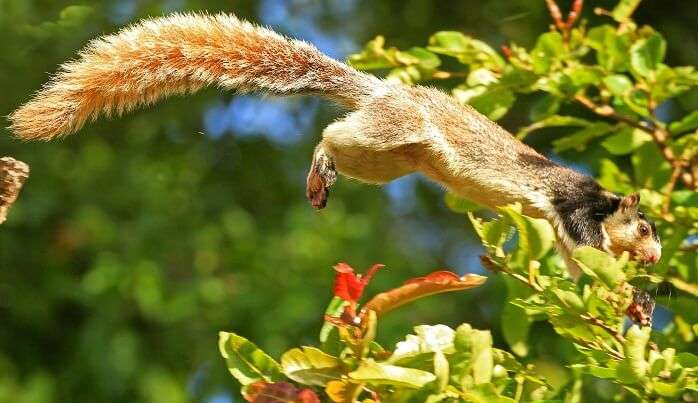
The Srivilliputhur Sanctuary is among the top 20 wildlife sanctuaries in India that takes up a huge portion of the Virudhunagar district as well as the Madurai district in western Tamil Nadu. Home to the peculiar and indigenous Grizzled Flying Squirrel, this place is a beautiful forest reserve with lush green foliage in its pristine form and a plethora of wild animals and birds that attract wildlife enthusiast and landscape photographers from all over India.
- Location: Srivilliputhur, Tamil Nadu 626125
- Timings: 5 AM – 6 PM
- Entry Fee: INR 15 (per adult) | INR 10 (per child) | INR 15 (per vehicle)
- Best Time To Visit Grizzled Squirrel Wildlife Sanctuary: Year-round
13. Eaglenest Wildlife Sanctuary, Arunachal Pradesh
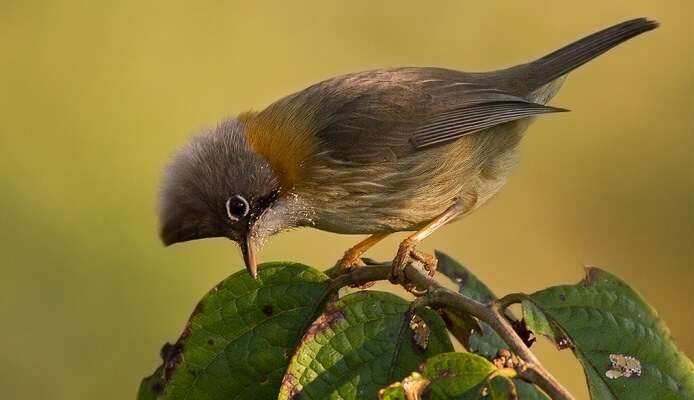
Home to over 700 different species of birds of all kinds (rare, endangered, migratory, resident), the Eaglenest Wildlife Sanctuary is among the top 20 wildlife sanctuaries in India and a birdwatching hotspots. It has always been a paradise for birdwatchers, ornithologists, and bird photographers, famous for the bright and colorful Bugun Liocichla. The species has been named after the old Bugun community living in this forested area.
- Location: Cona, Shannan, Arunachal Pradesh 790003
- Timings: 06 AM – 5 PM
- Entry Fee: INR 100 per person | INR 500 per vehicle
- Best Time To Visit Eaglenest Wildlife Sanctuary: November to April
Related Post: Malvan Resorts
14. Koyna Wildlife Sanctuary, Maharashtra
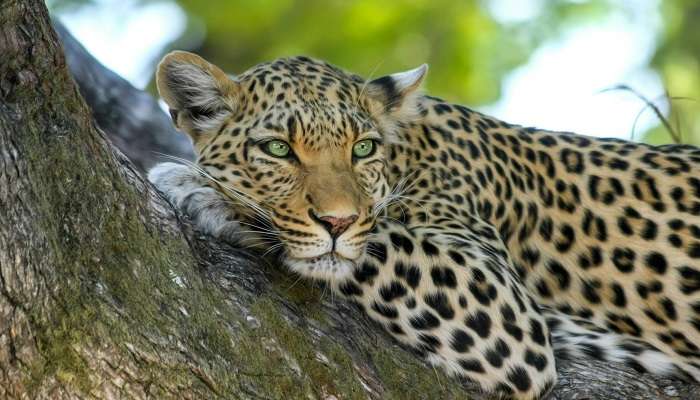
Koyna Wildlife Sanctuary, tucked away in the Satara district of Maharashtra, is famous for its gorgeous landscapes, abundant flora, and plethora of animals and birds. This wildlife sanctuary is home to King Cobras and Royal Bengal Tigers. Blanketed by a misty and perfectly cool climate, this sanctuary owing to its abundant beauty and various heritage sites, making this one of the finest wildlife sanctuaries in India.
- Location: Koyna Nagar, Koyna, Maharashtra 416212
- Timings: 7 AM – 6 PM
- Entry Fee: INR 20 per person | INR 50 per vehicle
- Best Time To Visit Koyna Wildlife Sanctuary: October
15. Tamor Pingla Wildlife Sanctuary, Chhattisgarh

Deriving its name from the famed Tamor Hill and the Pingla Nalla, Tamor Pingla Wildlife Sanctuary is a pristine bio-reserve in Chhattisgarh that shares its borders with Uttar Pradesh. The terrain is essentially a tableland rising sharply from its adjoining Tamki, Ghui, and Barpetia villages. Spread over a massive area of over 250 sq. km, these forested hills are home to the endangered chinkara, which is also found in the Bori Tiger Reserve, the smallest wildlife sanctuary in India.
- Location: Surajpur District, Chhattisgarh, India
- Timings: NA
- Entry Fee: INR 20 per Adults| INR 10 per child| INR 80 per foreign adult| INR 15 per school student (with a valid ID card).
- Best Time To Visit Tamor Pingla Wildlife Sanctuary: November to June
Related Post: Restaurants In Patiala
16. Senchal Wildlife Sanctuary, West Bengal
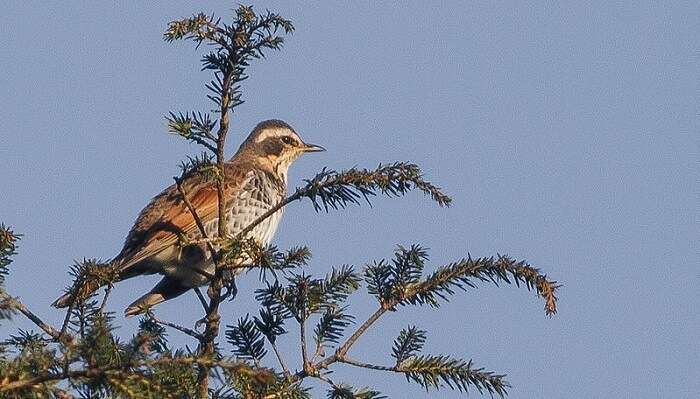
Wrapped with lofty mountains, Senchal Wildlife Sanctuary is one of the oldest and best wildlife sanctuaries in India. It is nestled at around 8,160 feet and houses a beautiful namesake lake, making this place ideal for both nature and animal lovers. It is home to different kinds of trees, including pine, birch, and oak, with around 350 different species of flowers, including orchids and rhododendrons.
- Location: Sittong Khasmahal, West Bengal
- Timings: 6 am – 6 pm (Closed in monsoon season)
- Entry Fee: NA (Cycling permit for INR 50)
- Best Time To Visit This Wildlife Sanctuary: February to March, September to December
17. Periyar Wildlife Sanctuary, Kerala
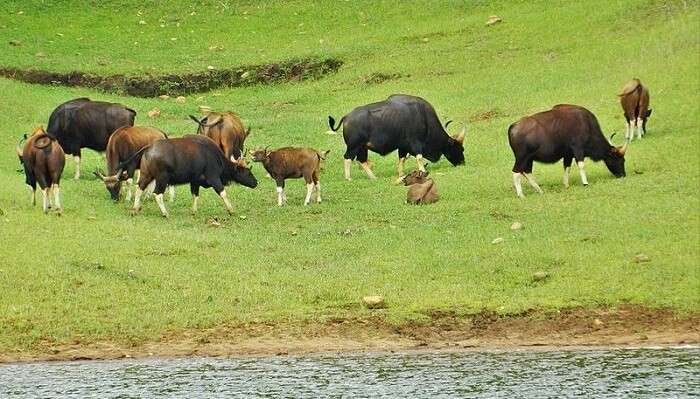
Nestled in the hillocks of the Western Ghats, Periyar Wildlife Sanctuary is an outstanding sanctuary, home to several animals and birds. The green grasslands around the river make a sensory treat and a perfect place for nature buffs to explore. Apart from going on a safari to witness wildlife in the natural habitat, one can also go to a spice garden, home to an array of spices like cardamom, clove, pepper, nutmeg, and cinnamon.
- Location: Kerala
- Timings: 6 am – 7 pm
- Entry Fee: INR 25
- Best Time To Visit Periyar Wildlife Sanctuary: March to May
Related Post: Paragliding In Kerala
18. Govind Wildlife Sanctuary, Uttarakhand
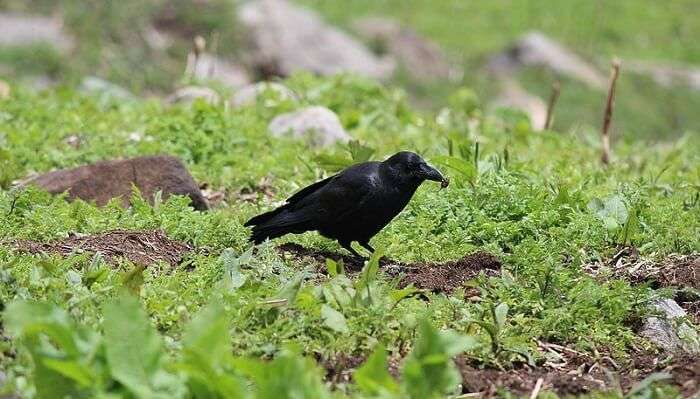
Next on the list of the wildlife sanctuaries in India is Govind Wildlife Sanctuary, which resides in the Uttarkashi District of Uttarakhand. Covering an area of 958 square kilometres, this sanctuary was established in the year 1955. It is sprawled across the mountains like Bandarpunch, Swargarohini, and Black Peak. The place has got its attention due to the snow-clad mountains and the famous Har Ki Dun trek, which is why it is a favorite place among trekkers.
- Location: Supin Range, Uttarakhand
- Timings: NA
- Entry Fee: INR 150 (For 3 days & 2 nights)
- Best Time To Visit Govind Wildlife Sanctuary: April to June, September to November
19. Chilika Wildlife Sanctuary, Odisha
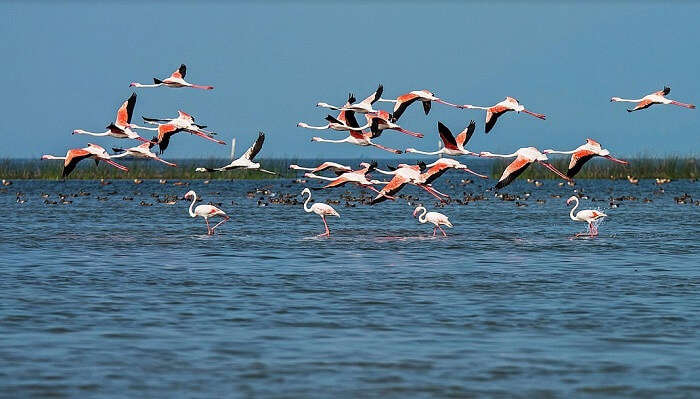
With its stunning collection of fauna species, Chilika Wildlife Sanctuary has been highlighted as one of the largest wildlife sanctuaries in India. The sanctuary is spread over around 1,100 square kilometers in Odisha and is home to aquatic wildlife. It is perfect for witnessing sunrise or sunset and capturing amazing natural scenes. Moreover, it. You can explore Chilika Wildlife Sanctuary via a boat ride.
- Location: Near Kalijai Temple, Puri
- Timings: 6 am – 7 pm
- Entry Fee: NA
- Best Time To Visit Chilika Wildlife Sanctuary: November to February
Related Post: Wildlife Sanctuaries In Odisha
20. Nauradehi Wildlife Sanctuary, Madhya Pradesh
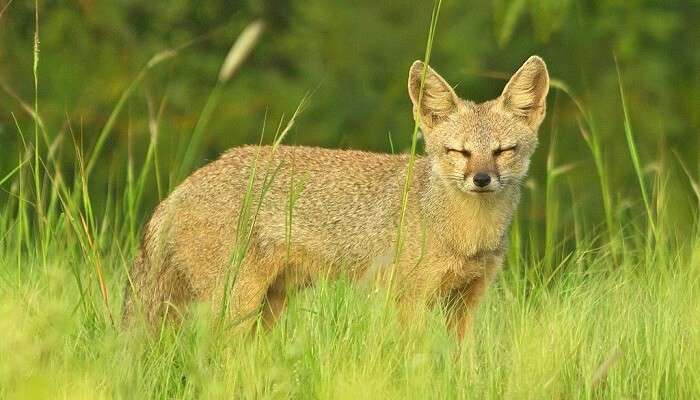
Nauradehi Wildlife Sanctuary is the largest wildlife sanctuary in Madhya Pradesh, covering an area of around 1,197 square kilometers. It is sprawled in four different districts, namely, Damoh, Raisen, Sagar, and Narsinghpur and was established in 1975. As cheetahs are going into extinction, this sanctuary makes some special efforts to preserve them and reintroduce them into the ecosystem.
- Location: Madhya Pradesh
- Timings: 6 am – 6 pm
- Entry Fee: NA
- Best Time To Visit Nauradehi Wildlife Sanctuary: November to June
21. Manas Wildlife Sanctuary, Assam
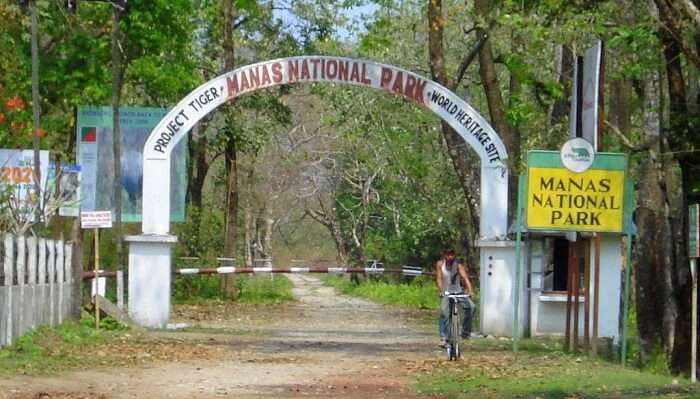
Manas Wildlife Sanctuary derived its name from the Manas River that flows near this sanctuary. Earlier, the park was spread in an area of only 360 square kilometers, which has now expanded to 950 square kilometers, which is sprawled across five districts of Assam. It is home to Project Tiger Reserve, Elephant Reserve, and Biosphere Reserve and has been declared as a World Heritage Site by UNESCO.
- Location: Manas Road, Barangabari Gyati Village, Dist Baksa, Gobardhana, Assam 781315
- Timings: 6 am – 3 pm
- Entry Fee: INR 20
- Best Time To Visit Manas Wildlife Sanctuary: October to February
Related Post:Waterfalls In Assam
22. Mundanthurai Wildlife Sanctuary, Tamil Nadu
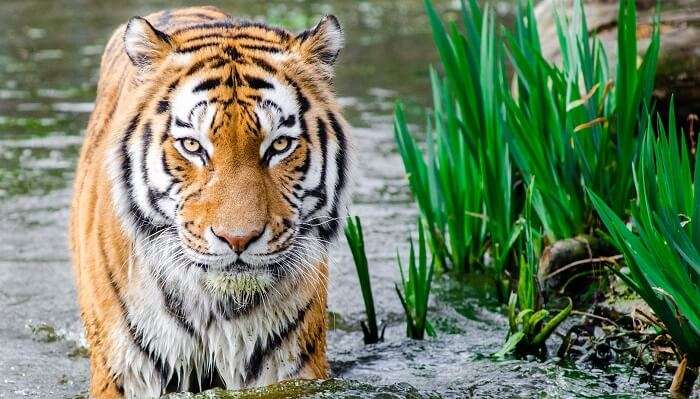
Mundanthurai Wildlife Sanctuary covers an area of about 900 square kilometers and is located in three different areas, including Kerala, Karnataka, and Tamil Nadu. Due to its rich biodiversity and beauty, the place is always teeming with photographers and wildlife enthusiasts. The sanctuary Mundanthurai Wildlife Sanctuary is one of the 17th declared Tiger Reserves in India.
- Location: Ambasamudram – Papanasam – Upper Dam Rd, Papanasam R.F., Tamil Nadu 627551
- Timings: 7 am – 5 pm
- Entry Fee: INR 10 (Children), INR 15 (Adults)
- Best Time To Visit Mundanthurai Wildlife Sanctuary: October to January
23. Indira Gandhi Wildlife Sanctuary, Tamil Nadu
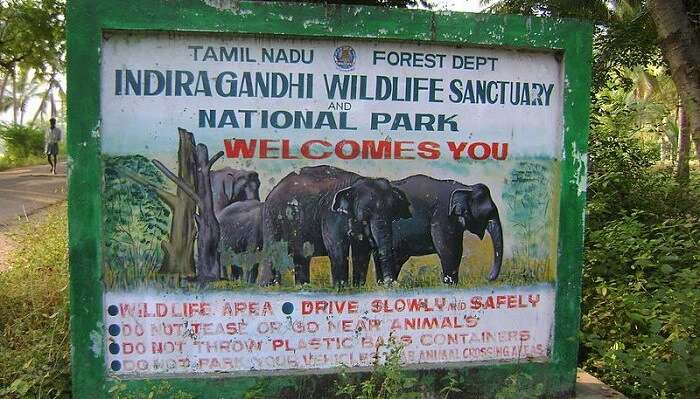
Formerly known as Anamalai Wildlife Sanctuary, it was renamed as Indira Gandhi Wildlife Sanctuary in the year 1987 to commemorate the then Prime Minister. The sanctuary is sprawled in an area of over 950 square kilometres, which is home to a great number of fauna. It consists of moist deciduous forests, grasslands, and dry scrub forests, which define its ever-changing topography.
- Location: Pollachi, Tamil Nadu
- Timings: 7 am – 4:30 pm
- Entry Fee: INR 25
- Best Time To Visit Indira Gandhi Wildlife Sanctuary: December to April
Related Post: Monsoon In Tamil Nadu
24. Landfall Island Wildlife Sanctuary, Andaman

Developed in 1987, Landfall Island Wildlife Sanctuary is located in the northernmost part of the Andaman and Nicobar Islands. It is about 30 square kilometers and is home to several peculiar species of wildlife. Not only can one witness animals and birds in their natural habitat but also spend some time with nature away from the daily hustle and bustle. It is a treasure trove for nature lovers. Moreover, the flora you will find here is only peculiar to this area.
- Location: Landfall, Andaman and Nicobar Islands
- Timings: 5 AM to 6 PM
- Entry Fee: INR 75 (Indian citizens)| INR 1000 (foreign Nationals)
- Best Time To Visit Landfall Island Wildlife Sanctuary: Throughout the year
25. Eturnagaram Wildlife Sanctuary, Telangana
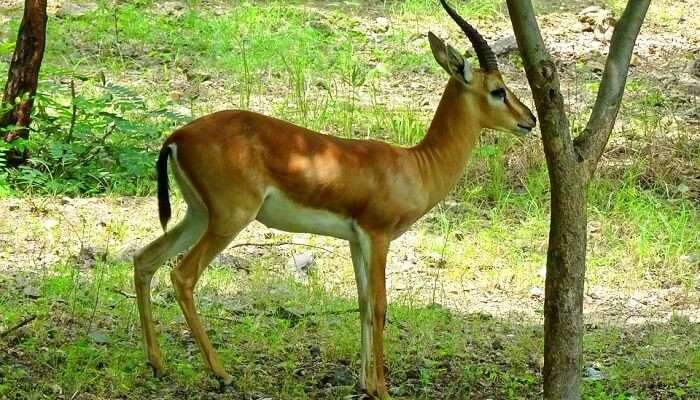
Located in the Warangal district of Telangana and sprawled in an area of 812 square kilometers, Eturnagaram Wildlife Sanctuary is one of the oldest wildlife sanctuaries in India. Its green valleys are eye-pleasing and the Godavari River is the main source of water and shelter to an array of biodiversity. While exploring this wildlife sanctuary, you will get a glimpse of hills, plains, springs, slopes, and streams.
- Location: Eturnagaram, Telangana 506344
- Timings: 9 am – 6 pm
- Entry Fee: INR 10 (Adults), INR 5 (Children)
- Best Time To Visit Eturnagaram Wildlife Sanctuary: October to April
You May Also Like To Read: National Parks In Telangana
Make sure you visit all these wildlife sanctuaries in India at least once in your life to see the rich nature’s bounty and biodiversity we have been blessed with. Take a trip to India to these states and cities and enjoy a safari in the lush jungles and barren deserts of India for a wholesome and thrilling wildlife experience.
For our editorial codes of conduct and copyright disclaimer, please click here.
Cover Image Source: Pexels
Frequently Asked Questions About Wildlife Sanctuaries In India
What are the famous Wildlife Sanctuaries in India?
Bhadra Wildlife Sanctuary, Chinnar Wildlife Sanctuary, Bhagwan Mahavir Wildlife Sanctuary, Dibang Wildlife Sanctuary, Eaglenest Wildlife Sanctuary, Periyar Wildlife Sanctuary, Govind Wildlife Sanctuary, Chilka Wildlife Sanctuary, Manas Wildlife Sanctuary are some of the famous wildlife sanctuaries in India.
What are the best months to visit Wildlife Sanctuaries in India?
The best time to visit wildlife sanctuaries in India is typically from October to April, when the weather is cooler and more comfortable for safaris. After the monsoon season, animals are more active near water sources.
Which is the largest Wildlife Sanctuary in India?
The Kutch Desert Wildlife Sanctuary in Gujarat is India's largest wildlife sanctuary. It covers an area of 4,954 square kilometers.
Which is the biggest wildlife sanctuary in India?
Sundarbans, Wild Ass Sanctuary, Hemis & Gangotri National Park are some of the biggest wildlife sanctuaries in India.
Which is the smallest wildlife sanctuary in India?
Bor Tiger Reserve. Established in 1970 near Hingani in Wardha District of Maharashtra, Bor Tiger Reserve sanctuary covers an area of 121.1 square kilometers.
Which is India’s first Wildlife sanctuary?
Jim Corbett National Park is the oldest wildlife sanctuary of India, founded in the year in 1936 as protection for the endangered Bengal tiger.
Looking To Book An International Holiday?
People Also Read:
Wildlife Sanctuaries In Bhutan Wildlife In South Africa Egypt Wildlife

Kanika has 4 years of experience in writing blogs and marketing content for travel. And when she’s not writing, she’s either exploring new terrains in a different corner of the world, or out in the city freezing urban scenarios in her camera.

